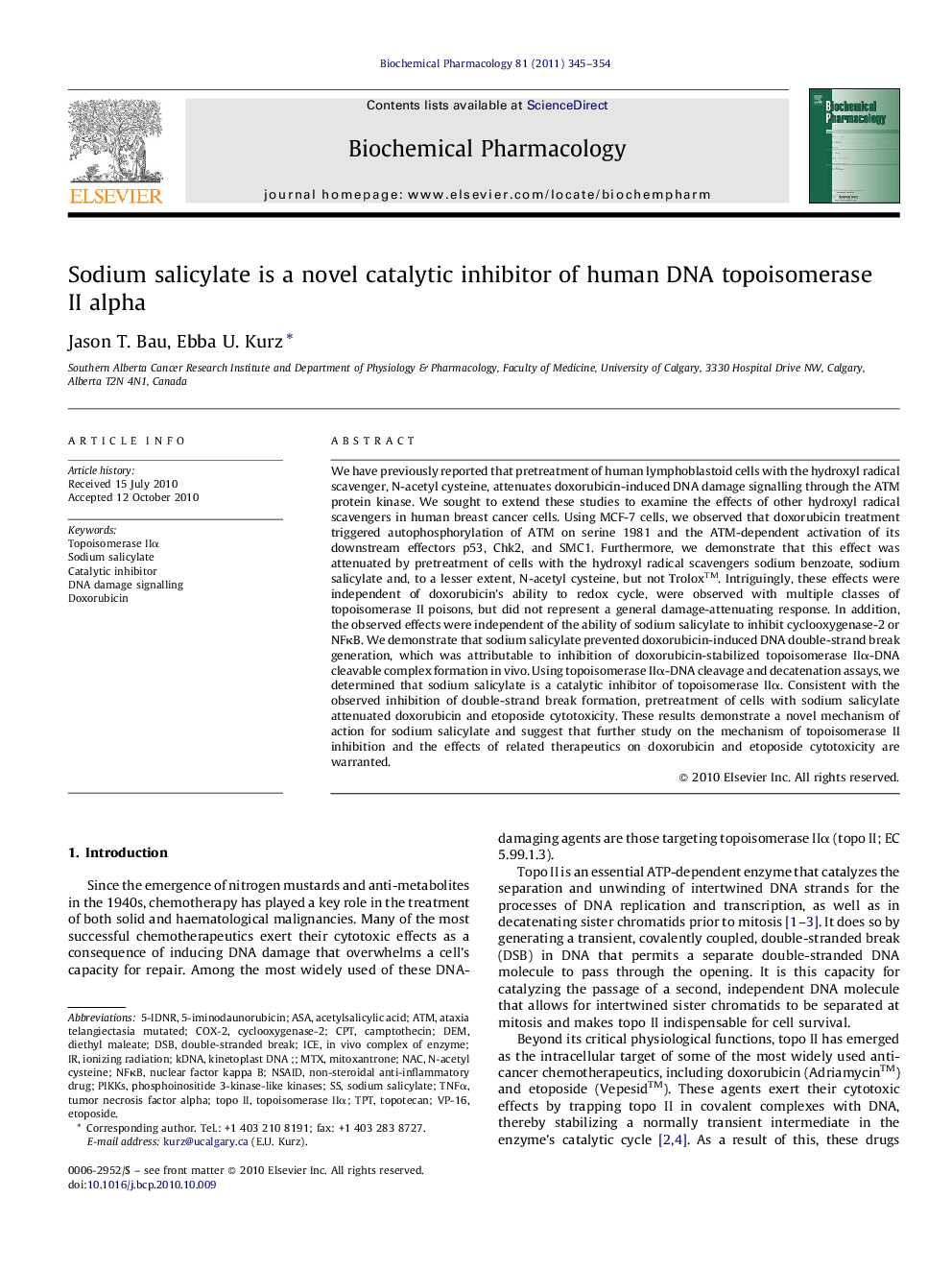| Article ID | Journal | Published Year | Pages | File Type |
|---|---|---|---|---|
| 2513167 | Biochemical Pharmacology | 2011 | 10 Pages |
We have previously reported that pretreatment of human lymphoblastoid cells with the hydroxyl radical scavenger, N-acetyl cysteine, attenuates doxorubicin-induced DNA damage signalling through the ATM protein kinase. We sought to extend these studies to examine the effects of other hydroxyl radical scavengers in human breast cancer cells. Using MCF-7 cells, we observed that doxorubicin treatment triggered autophosphorylation of ATM on serine 1981 and the ATM-dependent activation of its downstream effectors p53, Chk2, and SMC1. Furthermore, we demonstrate that this effect was attenuated by pretreatment of cells with the hydroxyl radical scavengers sodium benzoate, sodium salicylate and, to a lesser extent, N-acetyl cysteine, but not Trolox™. Intriguingly, these effects were independent of doxorubicin's ability to redox cycle, were observed with multiple classes of topoisomerase II poisons, but did not represent a general damage-attenuating response. In addition, the observed effects were independent of the ability of sodium salicylate to inhibit cyclooxygenase-2 or NFκB. We demonstrate that sodium salicylate prevented doxorubicin-induced DNA double-strand break generation, which was attributable to inhibition of doxorubicin-stabilized topoisomerase IIα-DNA cleavable complex formation in vivo. Using topoisomerase IIα-DNA cleavage and decatenation assays, we determined that sodium salicylate is a catalytic inhibitor of topoisomerase IIα. Consistent with the observed inhibition of double-strand break formation, pretreatment of cells with sodium salicylate attenuated doxorubicin and etoposide cytotoxicity. These results demonstrate a novel mechanism of action for sodium salicylate and suggest that further study on the mechanism of topoisomerase II inhibition and the effects of related therapeutics on doxorubicin and etoposide cytotoxicity are warranted.
Graphical abstractSS pretreatment prevents doxorubicin-induced DNA double-stranded breaks and prevents stabilization of cleavable complexes • Does not involve NFκB or COX-2 • SS pretreatment reduces cellular sensitivity to topoisomerase II poisons.Figure optionsDownload full-size imageDownload as PowerPoint slide
